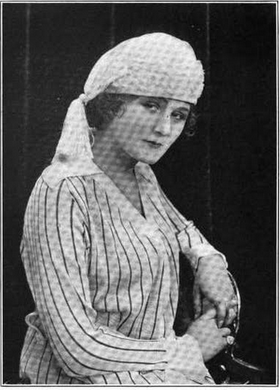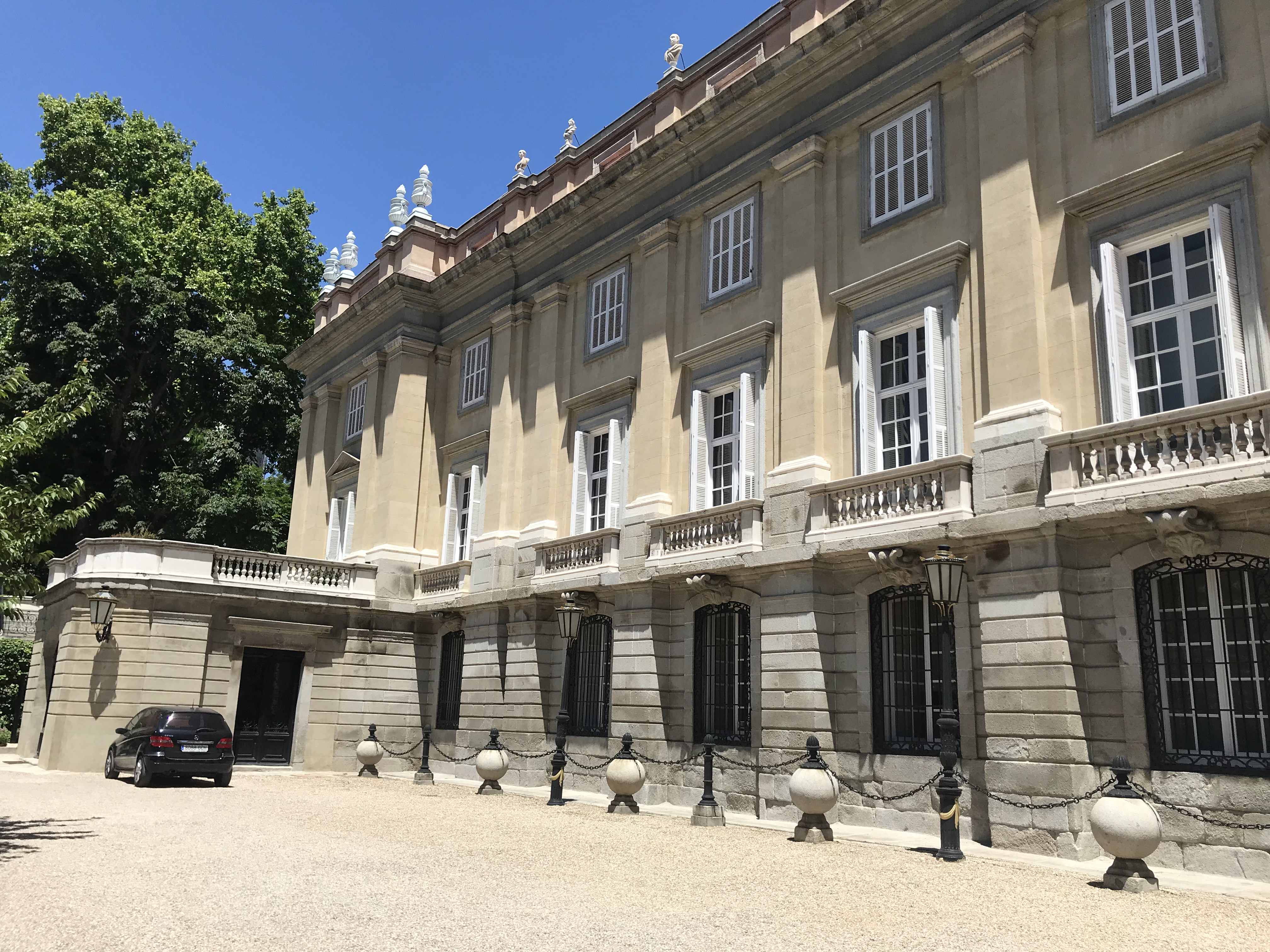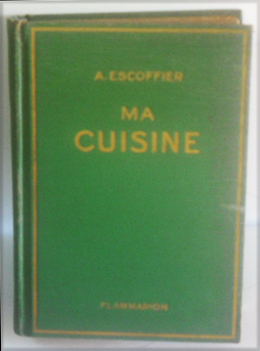|
Toque
A toque ( or ) is a type of hat with a narrow brim or no brim at all. Toques were popular from the 13th to the 16th century in Europe, especially France. They were revived in the 1930s; nowadays, they are primarily known as the traditional headgear for professional cooks, except in Canada, where the term ''toque'' is used interchangeably with the French Canadian spelling of ''tuque'' to refer to knit caps. Name The word ''toque'' has been known in English since around 1500. It is a loan word from the French (15th century), presumably by the way of the Spanish 'woman's headdress', from Arabic طاقة, itself from Old Persian 'veil, shawl'. The word in Breton means 'hat'. The spelling with ⟨que⟩ is Middle Breton, and the Modern Breton spelling is . Old Breton spells the word . History and uses A tall, black toque made of silk or velvet, often ornamented with an aigrette, was fashionable among the Spanish nobility during the 1500s. This style is seen in a 15 ... [...More Info...] [...Related Items...] OR: [Wikipedia] [Google] [Baidu] |
Knit Cap
A knit cap, colloquially known as a beanie, is a piece of knitted headwear designed to provide warmth in cold weather. It usually has a simple tapered shape, although more elaborate variants exist. Historically made of wool, it is now often made of synthetic fibers. Found all over the world where the climate demands warm clothing, knit caps are known by a Knit cap#Other names and history, variety of local names. In American English, this type of hat may be known as a ''beanie'' or a ''watch cap'', while in Canadian English, a knit cap is known as a , or ' (pronounced ). Construction Most knit caps are tapered at the top. The stretch of the knitting itself hugs the head, keeping the cap secure. They are sometimes topped with a pom-pom or loose tassels. Knit caps may have a folded brim, or none, and may be worn tightly fitting the head or loose on top. A South American tradition from the Andes Mountains is for the cap to have ear flaps, with strings for tying under the chin. A ... [...More Info...] [...Related Items...] OR: [Wikipedia] [Google] [Baidu] |
Philip II Of Spain
Philip II (21 May 152713 September 1598), sometimes known in Spain as Philip the Prudent (), was King of Spain from 1556, King of Portugal from 1580, and King of Naples and List of Sicilian monarchs, Sicily from 1554 until his death in 1598. He was also ''jure uxoris'' King of England and List of Irish monarchs, Ireland from Wedding of Mary I of England and Philip of Spain, his marriage to Queen Mary I in 1554 until her death in 1558. Further, he was Duke of Milan from 1540. From 1555, he was Lord of the Seventeen Provinces of the Habsburg Netherlands, Netherlands. The son of Emperor Charles V and Isabella of Portugal, Holy Roman Empress, Isabella of Portugal, Philip inherited his father's Spanish Empire in 1556, and succeeded to the Kingdom of Portugal, Portuguese throne in 1580 following a dynastic crisis. The Spanish conquests Spanish conquest of the Inca Empire, of the Inca Empire and of the Philippines, named in his honor by Ruy López de Villalobos, were completed during h ... [...More Info...] [...Related Items...] OR: [Wikipedia] [Google] [Baidu] |
Spanish Nobility
The Spanish nobility are people who possess a title of nobility confirmed by the Spanish Ministry of the Presidency, Justice and Relations with the Cortes, as well as those individuals appointed to one of Spain's three highest orders of knighthood: the Order of the Golden Fleece, the Order of Charles III and the Order of Isabella the Catholic. Some members of the Spanish nobility possess various titles that may be inherited or not, but the creation and recognition of titles is legally the prerogative of the monarchy of Spain. Many Spanish titles and noble families still exist and many have transmitted their aristocratic status since the Middle Ages. Some aristocratic families in Spain use the nobiliary particle ''de'' before their family name, although this was more prominent before the 20th century. History 16th century The centralization of the Spanish royal court in early modern Europe reshaped Aristocracy, aristocratic power, shifting influence from regional noble dom ... [...More Info...] [...Related Items...] OR: [Wikipedia] [Google] [Baidu] |
Mortarboard
The square academic cap, graduate cap, cap, mortarboard (because of its similarity in appearance to the mortarboard used by brickmasons to hold mortar) or Oxford cap is an item of academic dress consisting of a horizontal square board fixed upon a skull-cap, with a tassel attached to the centre. In the UK and the US, it is commonly referred to informally in conjunction with an academic gown as a "cap and gown". It is also sometimes termed a square, trencher, or corner-cap. The adjective academical is also used. The cap, together with the gown and sometimes a hood, now form the customary uniform of a university graduate in many parts of the world, following a British model. Origins The mortarboard may have developed from the biretta, a similar-looking hat worn by Roman Catholic clergy. The biretta itself may have been a development of the Roman ''pileus quadratus'', a type of skullcap with superposed square and tump (meaning small mound). A reinvention of this type of ... [...More Info...] [...Related Items...] OR: [Wikipedia] [Google] [Baidu] |
Mortar Board
Mortar Board is an American national honor society for college juniors and seniors. It was established in 1918 in Syracuse, New York through the merger of four local women's organizations from four institutions. It started admitting men in 1975. Mortar Board has chartered 235 collegiate chapters. It is a member of the Association of College Honor Societies. History Mortar Board was founded in Syracuse, New York on February 15, 1918. It was the first national honor society for college senior women and continues to promote women's interests in higher education today. The organization coalesced by the agreement of four local women's honor societies. The founding local organizations were: * Der Hexenkreis, Cornell University * Mortar Board, Ohio State University * Mortarboard, University of Michigan * Pi Sigma Chi, Swarthmore College These and other chapters continue the tradition of adopting unique, historical, or symbolic local names as their chapter designations, and do not u ... [...More Info...] [...Related Items...] OR: [Wikipedia] [Google] [Baidu] |
Magistrate
The term magistrate is used in a variety of systems of governments and laws to refer to a civilian officer who administers the law. In ancient Rome, a '' magistratus'' was one of the highest ranking government officers, and possessed both judicial and executive powers. In other parts of the world, such as China, magistrate is a word applied to a person responsible for administration over a particular geographic area. Today, in some jurisdictions, a magistrate is a judicial officer who hears cases in a lower court, and typically deals with more minor or preliminary matters. In other jurisdictions (e.g., England and Wales), magistrates are typically trained volunteers appointed to deal with criminal and civil matters in their local areas. Original meaning In ancient Rome, the word '' magistratus'' referred to one of the highest offices of state. Analogous offices in the local authorities, such as '' municipium'', were subordinate only to the legislature of which they generally ... [...More Info...] [...Related Items...] OR: [Wikipedia] [Google] [Baidu] |
Auguste Escoffier
Georges Auguste Escoffier (; 28 October 1846 – 12 February 1935) was a French chef, restaurateur, and culinary writer who popularised and updated traditional French cooking methods. Much of Escoffier's technique was based on that of Marie-Antoine Carême, one of the codifiers of French ''haute cuisine''; Escoffier's achievement was to simplify and modernise Carême's elaborate and ornate style. In particular, he codified the recipes for the five mother sauces. Referred to by the French press as ''roi des cuisiniers et cuisinier des rois'' ("king of chefs and chef of kings"—also previously said of Carême), Escoffier was a preeminent figure in London and Paris during the 1890s and the early part of the 20th century. Alongside the recipes, Escoffier elevated the profession. In a time when kitchens were loud, riotous places where drinking on the job was commonplace, Escoffier demanded cleanliness, discipline, and silence from his staff. In bringing order to the kitchen, he t ... [...More Info...] [...Related Items...] OR: [Wikipedia] [Google] [Baidu] |
Marie-Antoine Carême
Marie-Antoine Carême (; 8 June 1783 or 178412 January 1833), known as Antonin Carême, was a leading French chef of the early 19th century. Carême was born in Paris to a poor family and, when still a child, worked in a cheap restaurant. Later he became an apprentice to a leading Parisian ''pâtissier'' and quickly became known for his patisserie skills. He was deeply interested in architecture and was famous for his large ''pièces montées''table decorations sculpted in sugar, depicting classical buildings. Working with leading chefs of the day, Carême extended his knowledge to cover all aspects of cooking, and became head chef to prominent people including Charles Maurice de Talleyrand-Périgord, Tsar Alexander I of Russia and the Prince Regent in Britain. He codified and to some extent simplified classical French cookery, insisted on the finest and most expensive ingredients, and was regarded as the foremost chef of his day. Carême wrote a series of books, lavishly ... [...More Info...] [...Related Items...] OR: [Wikipedia] [Google] [Baidu] |
Simon & Schuster
Simon & Schuster LLC (, ) is an American publishing house owned by Kohlberg Kravis Roberts since 2023. It was founded in New York City in 1924, by Richard L. Simon and M. Lincoln Schuster. Along with Penguin Random House, Hachette Book Group USA, Hachette, HarperCollins and Macmillan Publishers, Simon & Schuster is considered one of the Big Five (publishers), 'Big Five' English language publishers. , Simon & Schuster was the third largest publisher in the United States, publishing 2,000 titles annually under 35 different Imprint (trade name), imprints. History Early years In 1924, Richard L. Simon, Richard Simon's aunt, a crossword puzzle enthusiast, asked whether there was a book of ''New York World'' crossword puzzles, which were popular at the time. After discovering that none had been published, Simon and M. Lincoln Schuster, Max Schuster decided to launch a company to exploit the opportunity.Frederick Lewis Allen, ''Only Yesterday: An Informal History of the 1920s'', p. ... [...More Info...] [...Related Items...] OR: [Wikipedia] [Google] [Baidu] |
Chef
A chef is a professional Cook (profession), cook and tradesperson who is proficient in all aspects of outline of food preparation, food preparation, often focusing on a particular cuisine. The word "chef" is derived from the term (), the director or head of a kitchen. Chefs can receive formal training from an institution, as well as by apprenticing with an experienced chef. Different terms use the word ''chef'' in their titles and deal with specific areas of food preparation. Examples include the ''sous-chef'', who acts as the second-in-command in a kitchen, and the ''chef de partie'', who handles a specific area of production. The kitchen brigade system is a hierarchy found in restaurants and hotels employing extensive staff, many of which use the word "chef" in their titles. Underneath the chefs are the ''kitchen assistants''. A chef's standard uniform includes a hat (called a ''toque''), neckerchief, Double-breasted, double-breasted jacket, apron and sturdy shoes (that ma ... [...More Info...] [...Related Items...] OR: [Wikipedia] [Google] [Baidu] |
William Orpen Le Chef De L'Hôtel Chatham, Paris
William is a masculine given name of Germanic origin. It became popular in England after the Norman conquest in 1066,All Things William"Meaning & Origin of the Name"/ref> and remained so throughout the Middle Ages and into the modern era. It is sometimes abbreviated "Wm." Shortened familiar versions in English include Will or Wil, Wills, Willy, Willie, Bill, Billie, and Billy. A common Irish form is Liam. Scottish diminutives include Wull, Willie or Wullie (as in Oor Wullie). Female forms include Willa, Willemina, Wilma and Wilhelmina. Etymology William is related to the German given name ''Wilhelm''. Both ultimately descend from Proto-Germanic ''*Wiljahelmaz'', with a direct cognate also in the Old Norse name ''Vilhjalmr'' and a West Germanic borrowing into Medieval Latin ''Willelmus''. The Proto-Germanic name is a compound of *''wiljô'' "will, wish, desire" and *''helmaz'' "helm, helmet".Hanks, Hardcastle and Hodges, ''Oxford Dictionary of First Names'', Oxford Un ... [...More Info...] [...Related Items...] OR: [Wikipedia] [Google] [Baidu] |






